- Home
- S. D. Perry
Twist of Faith
Twist of Faith Read online
TWIST OF FAITH
This book is a work of fiction. Names, characters, places and incidents are products of the authors’ imaginations or are used fictitiously. Any resemblance to actual events or locales or persons, living or dead, is entirely coincidental.
Avatar, Book 1, Avatar, Book 2, Abyss, Demons of Air and Darkness, and “Horn and Ivory” copyright © 2001 by CBS Studios Inc. All Rights Reserved.
STAR TREK and related marks are trademarks of CBS Studios Inc.
This book is published by Pocket Books, a division of Simon & Schuster, Inc., under exclusive license from CBS Studios Inc.
All rights reserved, including the right to reproduce this book or portions thereof in any form whatsoever.
For information address Pocket Books, 1230 Avenue of the Americas, New York, NY 10020
ISBN-13: 978-1-4165-6074-6
ISBN-10: 1-4165-6074-2
POCKET and colophon are registered trademarks of
Simon & Schuster, Inc.
These titles were previously published individually by Pocket Books.
Visit us on the World Wide Web:
http://www.SimonSays.com
What you leave behind is not what is engraved in stone monuments, but what is woven into the lives of others.
—PERICLES
And all but their faith overthrown.
—WILLIAM WETMORE STORY,IO VICTIS
Contents
INTRODUCTION by David R. George III
AVATAR by S. D. Perry
Book One
Prologue
Chapter One
Chapter Two
Chapter Three
Chapter Four
Chapter Five
Chapter Six
Chapter Seven
Chapter Eight
Chapter Nine
Chapter Ten
Chapter Eleven
Chapter Twelve
Chapter Thirteen
Chapter Fourteen
Chapter Fifteen
Chapter Sixteen
Chapter Seventeen
Chapter Eighteen
Chapter Nineteen
Chapter Twenty
Epilogue
Book Two
Prologue
Chapter One
Chapter Two
Chapter Three
Chapter Four
Chapter Five
Chapter Six
Chapter Seven
Chapter Eight
Chapter Nine
Chapter Ten
Chapter Eleven
Chapter Twelve
Chapter Thirteen
Chapter Fourteen
Chapter Fifteen
Chapter Sixteen
Chapter Seventeen
Chapter Eighteen
Chapter Nineteen
Chapter Twenty
Epilogue
ABYSS by David Weddle and Jeffrey Lang
Chapter One
Chapter Two
Chapter Three
Chapter Four
Chapter Five
Chapter Six
Chapter Seven
Chapter Eight
Chapter Nine
Chapter Ten
Chapter Eleven
Chapter Twelve
Chapter Thirteen
Chapter Fourteen
Chapter Fifteen
Chapter Sixteen
Chapter Seventeen
Chapter Eighteen
Chapter Nineteen
Chapter Twenty
DEMONS OF AIR AND DARKNESS by Keith R. A. DeCandido
Historian’s Note
Chapter One
Chapter Two
Chapter Three
Chapter Four
Chapter Five
Chapter Six
Chapter Seven
Chapter Eight
Chapter Nine
Chapter Ten
Chapter Eleven
Chapter Twelve
Chapter Thirteen
Chapter Fourteen
Chapter Fifteen
Chapter Sixteen
Chapter Seventeen
Chapter Eighteen
Chapter Nineteen
Chapter Twenty
Chapter Twenty-One
Chapter Twenty-Two
Chapter Twenty-Three
Chapter Twenty-Four
Chapter Twenty-Five
HORN AND IVORY by Keith R. A. DeCandido
Chapter One
Chapter Two
Chapter Three
Chapter Four
Chapter Five
Chapter Six
Chapter Seven
Chapter Eight
Chapter Nine
Chapter Ten
Chapter Eleven
Chapter Twelve
About the Authors
Introduction
Deep Into That Darkness Peering by David R. George III
Deep into that darkness peering, long I stood there wondering, fearing, Doubting, dreaming dreams no mortal ever dared to dream before….
—EDGAR ALLAN POE, “THE RAVEN”
Nearly a decade and a half later, I still vividly recall watching that first episode of the then-newest Star Trek television series. Its development had been announced months earlier, to both fanfare and skepticism. Unlike its forebears, this show would include among its cast of characters numerous non-Starfleet personnel, and they would interact not on the Starship Enterprise or on any vessel at all, but on a space station. The producers also noted that this latest incarnation of Trek would unveil a darker side of Gene Roddenberry’s optimistic creation. It would be called Deep Space Nine.
The name of the show, I remember, did not fill me with anticipation. Just a few years earlier, a B movie had been released with a similar name—Deep Star Six, I think—and the resemblance between the titles seemed unfortunate. Of greater significance, I heard fans wondering whether a series that did not include the Enterprise could even properly be considered Star Trek. How would that work from week to week, some asked, curious about the prospect of adventures having to visit the space station again and again, rather than the new crew boldly going, seeking out new life and new civilizations?
With the very first episode of Deep Space Nine, the answer became immediately clear that it would work the way that Star Trek had always worked, the way that much good fiction works: as a combination of expert storytelling, compelling characters, and meaningful themes. Cocreator Michael Piller’s teleplay for “Emissary” provided all of that and more. The two-hour pilot supplied viewers with an astonishingly textured milieu in which future tales would unfold. Protagonists and antagonists came bearing histories and flaws, the setting offered alien architecture and technology, and two subjects often anathema to series television—politics and religion—entwined their way through that initial episode. From its inception, DS9 explored the realities and effects of occupation and liberation, of détente and entente, of faith and orthodoxy, of deliverance and charity. The Cardassians maintained a stratocratic government, the Bajorans kept both a provisional secular authority and a religious hierarchy, and the Federation stood between the two peoples, on the side of one and as a buffer against the other.
And yeah, the show was dark. Physically, the space station contained hard, shadowy surfaces and gloomy passages. Dramatically, the tales often ventured out of the brilliant, well-lighted areas of life and into complicated gray areas. Characters and situations changed over time, not always for the better, and themes and stories sometimes reached not merely from one episode to the next, but from one season to the next. Deep Space Nine presented a gloriously complex tapestry of diverse, fascinating threads, quite a few of them weaving in unexpected directions. In some ways, the show demanded a lot of its audience, but for those who s
tayed with it, their viewership paid handsome rewards.
It seemed evident to me, right from the start, that the series could play out for years and never exhaust the surfeit of detailed material that had been built into its foundation. Indeed, through seven seasons, under the leadership of its head writers—first Michael Piller, and later Ira Steven Behr—DSN developed the potential initially invested in it, then fulfilled and exceeded it. One episode after another, the show explored human issues in intriguing and accessible ways. This might not have been your parents’ Star Trek, but it was most assuredly Star Trek.
The series came to a close after one hundred seventy-six hours, bringing resolutions to numerous storylines, some of which had begun as far back as the show’s pilot. A war ended, heroes and villains died, others moved on to the next stages of their lives. As with the first installment of the series, I very clearly remember watching the last one, entitled “What You Leave Behind.” I found the experience bittersweet. While I had thoroughly enjoyed both “Emissary” and “What You Leave Behind”—not to mention the years worth of episodes between—the former had promised a future of quality dramatic fiction, while the latter left all of that in the past. No more would I or anybody else be treated to wonderful new tales set in the Deep Space Nine universe.
Enter Marco Palmieri.
Some readers may be familiar with Marco because they’ve occasionally seen his name on the cover of a Star Trek book, or perhaps because they’ve read his posts on the Internet at various sites devoted to the discussion of Trek literature. I suspect, though, that many readers may not know who Marco is or what he does. As an editor at Pocket Books, a part of Simon & Schuster, he shares the responsibility for managing the Trek publishing line. Marco hires writers, approves and edits stories, and helps mold the overall direction of the books. Included in a list of his numerous accomplishments is the omnibus edition you now hold in your hands, as well as each of the works it comprises.
After Deep Space Nine departed the airwaves in the spring of 1999, Marco, himself a fan of the series, saw a means of keeping it alive by continuing the saga forward in print, picking up where the final episode had ended. Yes, many plotlines had been resolved in DS9’s finale, but others had not: Bajor still had not joined the Federation, Ben Sisko remained in another reality, and Kasidy Yates had yet to give birth, just to identify a few of the loose ends. More than that, “What You Leave Behind” had actually offered up springboards for new tales: for example, Kira Nerys had taken over command of the space station, Odo had finally rejoined the Great Link, and Garak had at last returned to Cardassia Prime, now a devastated world.
So Marco imagined relighting the torch and carrying it onward. He crafted a proposal for an ongoing series of Deep Space Nine books. In the tradition of the show itself, Marco envisioned new characters and further evolution for the existing characters. He foresaw intricate, dramatic storylines, some of which would be introduced, explored, and brought to fruition in one work, while others would stretch across multiple tales. As on television, twists would abound.
One of those would turn out to be a twist of faith.
But first, as the rights holder for Star Trek at that time, Paramount Pictures had to approve Marco’s pitch. (As of this publication, CBS Studios holds those rights.) Paula Block has long functioned as a gatekeeper in this regard, somehow managing to expertly serve the interests of both her employers and the readers of Trek literature. Far from being an obstructionist, Paula appreciates creativity and keeps herself open to new ideas and methods. After working through Marco’s innovative proposal with him, and after offering her own observations and suggestions, she endorsed his plan.
The first of the new books, Marco knew, would have a great deal to accomplish. It would need to reintroduce readers to Deep Space 9 and to the changes that had taken place at the end of the series. Captain Sisko had vanished, apparently to reside with the nonlinear aliens in the Bajoran wormhole—or with the Prophets in the Celestial Temple, depending upon your point of view. Kira Nerys had been given command of the space station, which consequently created an opening for an executive officer. Ezri Dax and Julian Bashir had finally begun a romantic relationship. Miles O’Brien had left the station and gone back with his family to Earth, allowing Nog to be promoted to DS9’s chief of operations. Odo had left as well, going back to the Great Link, and Worf had accepted a position as Federation ambassador to the Klingon Empire. Damar, Winn Adami, and the last of the Weyoun clones had each met their demise. The Dominion War had come to a close and the wormhole had once more opened to nonmilitary traffic.
But the tale that resumed the chronicles of Deep Space Nine would also have to do far more than deal with all of the changes wrought during the last episodes of the series. It would have to introduce new characters and launch new adventures, and it would have to do so in ways worthy of DS9. To achieve all of that, Marco wisely turned to S. D. Perry.
As with my watching the superb pilot and finale episodes of Deep Space Nine, I clearly remember reading Avatar, the two-volume set that relaunched the series in book form. At some point, Marco had begun talking with me about the possibility of my contributing to the new line, and so he sent me prepublication copies of those first two books, which I immediately devoured. I was—if you’ll pardon the phrase—transported. Under Marco’s guidance, S. D. Perry had crafted an involved story that stood as an exemplar of what Deep Space Nine had on television given to its audience. Her fine prose revived for me the characters of Kira Nerys and Julian Bashir, of Jake Sisko and Ezri Dax, of Nog and Quark. Ro Laren, who had betrayed Captain Picard when she had abandoned her post aboard the Enterprise-D to join the Maquis, returned as well. I also met Commander Tiris Jast, a Bolian woman assigned by Starfleet as the station’s new first officer; Elias Vaughn, a centenarian with eighty years of experience in Starfleet Intelligence; Ensign Thirishar ch’Thane, a young Andorian and DS9’s new science officer; and a surprising arrival from the Gamma Quadrant: a Jem’Hadar elder.
All of these characters—along with still other familiar faces reappearing and even more new faces joining the saga—fit perfectly into S. D. Perry’s absorbing story. While some characters still deal with the fallout of the Dominion War, time and life have moved on. Deep Space 9 and its crew face new threats, military, political, and religious. So much of what invested Deep Space Nine as a riveting television series finds its way into S. D. Perry’s novels, where it is given even greater lease to engage the audience. Fans of the show could not have been better served by this accomplished writer.
As I read Avatar, I quickly realized that, as high as the dramatic potential had been for DS9 on television, the stakes had been raised in these new books. The limitations of sets and budgets no longer applied, nor did the restrictions imposed by the structure of a television episode. The availability of actors no longer mattered either; any character could be brought back to these new tales, or even resurrected for them. Anything that could be imagined could be included in these stories without regard to the practicality of filming it. Further, with the series off the air and no apparent prospects for a Deep Space Nine feature film, real-life production considerations no longer protected the characters. That is, an actor’s multiyear contract would not prevent their role from being written out of the show. Coupling all of that with Marco Palmieri and Paula Block’s commitments to publishing compelling Star Trek literature, I suddenly understood that Kira Nerys could quit her post on the station, perhaps chasing after Odo or going home to Bajor to pursue a spiritual life. She could find another love, suffer a debilitating injury, even die. I knew the professionalism and creativity of Paula and Marco, could see on the page what the talented S. D. Perry brought to the table, and it seemed clear that anything could happen, so long as it contributed significantly to the tale being told. Kira and all the rest of the characters were at risk in ways they hadn’t necessarily been during the run of the show.
It took almost no time at all to have such suspicions confirmed.
Not every character survives S. D. Perry’s story, and of those who do, some confront major changes in their lives. As gripping as DS9 had been on television, it had become even more so in print.
I anxiously awaited the next book in the series. Just as Avatar had carried Deep Space Nine forward from the show’s last episode, when it arrived in bookstores, so too did Abyss pick up the baton from S. D. Perry’s two volumes. David Weddle, a former staff writer and executive story editor on DS9, teamed with Jeff Lang to bring back the nefarious Section 31. But while the secretive organization provokes all the DS9 crew to action, it is Dr. Bashir who must face his own demons when he meets the brilliant physician Ethan Locken, like himself a genetically enhanced genius. In a story that thrusts Bashir, Ezri Dax, and Ro Laren into harm’s way, readers are treated to deep explorations of each character. The nature of the chemical-dependent soldiers bred by the Founders to form an army, the lethal Jem’Hadar, is also put at issue. In Abyss, as in Avatar, the fates of the characters—who would live, who would die, who would change—remained fluid and uncertain.
From Locken’s laboratory on the planet Sindorin, Keith R. A. DeCandido then took readers in Demons of Air and Darkness to the world of Europa Nova. There, an ecological disaster threatens the independent human colony, and the crew of DS9 lead the rescue efforts. More new characters are introduced, including Andorian Councilor Charivretha zh’Thane, who also happens to be one of Ensign ch’Thane’s parents, and a woman named Treir, who long before the television series Enterprise premiered offers up a distinctive new take on Orion “slave girls.” As well, other characters from Star Trek’s past return, including an unexpected appearance by a particular Cardassian.
While Quark embarks on an unlikely mission to address the cause of the environmental threat on Europa Nova—a suddenly functioning Iconian gateway that connects the Alpha Quadrant with the Delta Quadrant—Kira directs the evacuation of the population. But then she and another of the regular characters is seriously imperiled in a thrilling sequence that culminates in an unforgettable confrontation between a Jem’Hadar warrior and a Hirogen hunter. While one character’s fate is decided in the novel’s closing pages, Kira’s is not. Instead, her predicament takes readers directly into Keith DeCandido’s follow-up to Demons, the novella Horn and Ivory.

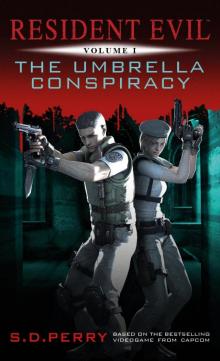 The Umbrella Conspiracy
The Umbrella Conspiracy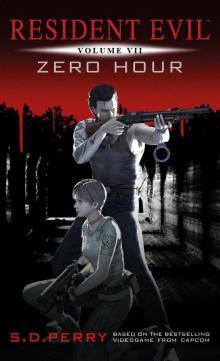 Zero Hour
Zero Hour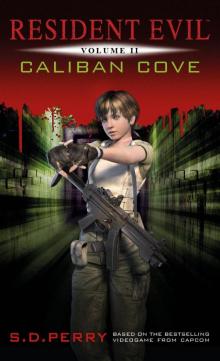 Caliban Cove
Caliban Cove Code: Veronica
Code: Veronica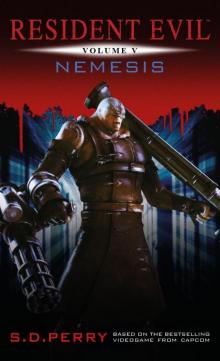 Nemesis
Nemesis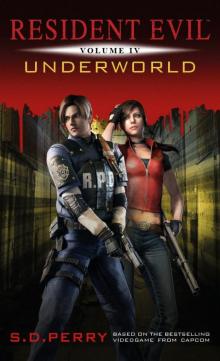 Underworld
Underworld The Summer Man
The Summer Man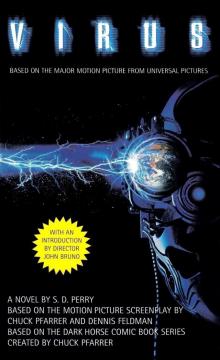 Virus
Virus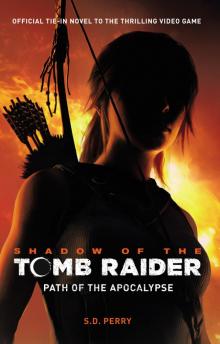 Shadow of the Tomb Raider--Path of the Apocalypse
Shadow of the Tomb Raider--Path of the Apocalypse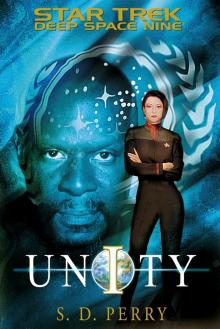 Unity
Unity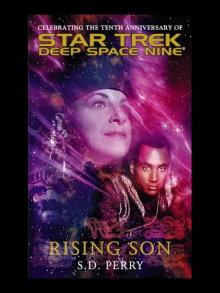 Rising Son
Rising Son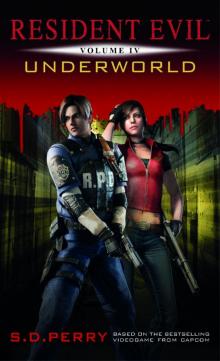 Resident Evil: Underworld
Resident Evil: Underworld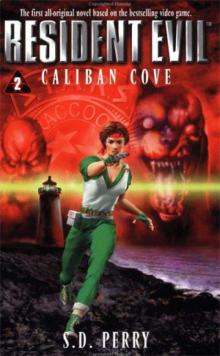 Resident Evil – Caliban Cove
Resident Evil – Caliban Cove Resident Evil – Nemesis
Resident Evil – Nemesis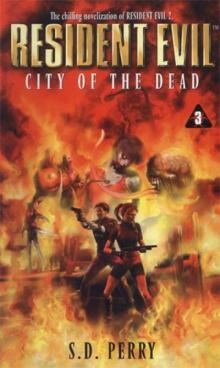 Resident Evil – City of the Dead
Resident Evil – City of the Dead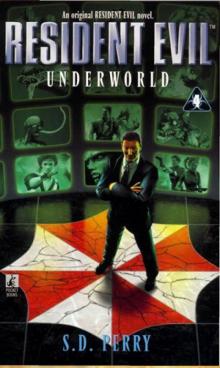 Resident Evil – Underworld
Resident Evil – Underworld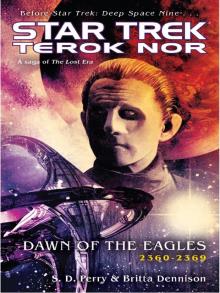 Star Trek: Terok Nor 03: Dawn of the Eagles
Star Trek: Terok Nor 03: Dawn of the Eagles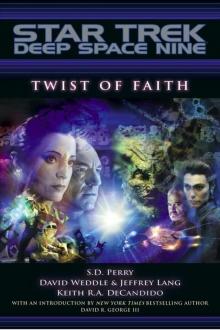 Twist of Faith
Twist of Faith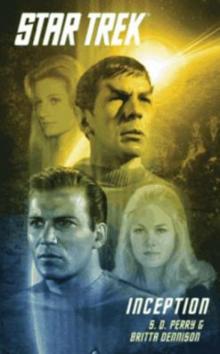 Star Trek: Inception
Star Trek: Inception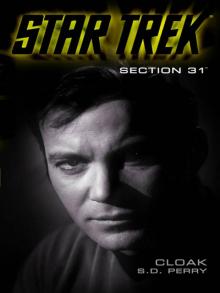 Cloak
Cloak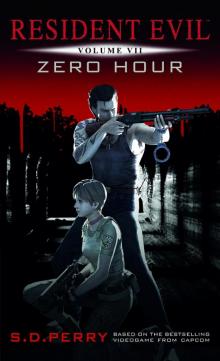 Resident Evil
Resident Evil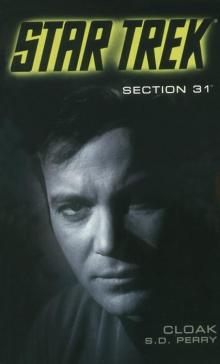 Star Trek - TOS - Section 31 - Cloak
Star Trek - TOS - Section 31 - Cloak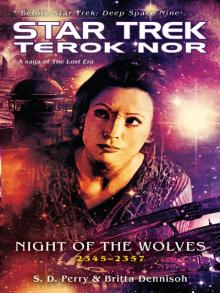 Star Trek: Terok Nor 02: Night of the Wolves
Star Trek: Terok Nor 02: Night of the Wolves